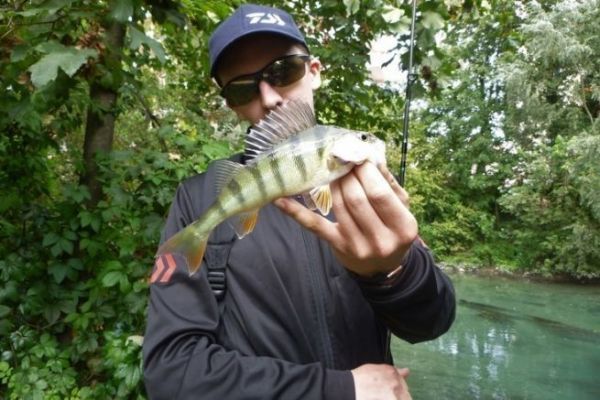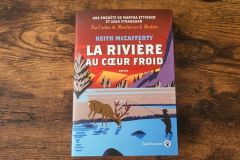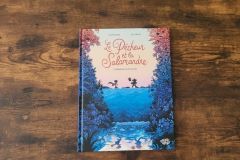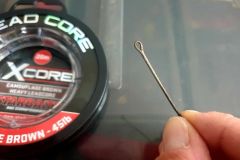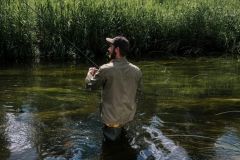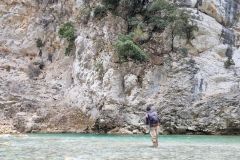Books or social networks?
Young people looking for information on a particular type of fishing, fathers who are getting back into fishing because their children decide to go, the single mother who wants to take her son or daughter fishing will find everything they need on the web, but where do they really go? The problem is that these days we can access everything we want in record time (videos, tutorials, online articles, fishing tackle sales...) but are we really going for the essentials? Some of us get lost on social networks looking for the best spot to catch either the biggest fish or the most fish. When browsing the net, it's mostly the first option that comes to mind.
What does a beginner want?
Go fishing, of course, and catch one or more fish. He needs the basics, something simple: a rod, nylon, a float, sinkers, a hook and bait (a good old earthworm will do), a few tips and eventually some fish. The aim is not to teach the child or beginner a particular technique, but (in my opinion) to go step by step.
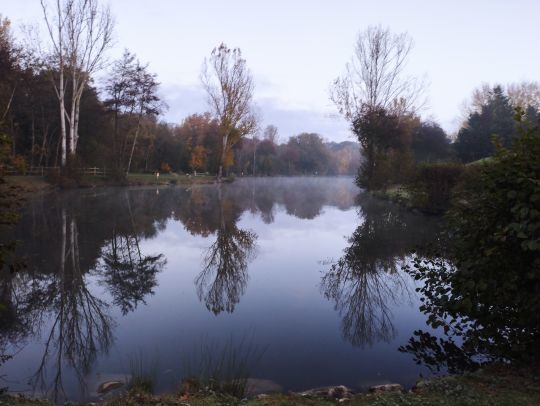
What a joy to see a child or beginner of any age catch their first fish. Maybe I'm wrong, but it seems to me that we've lost the flavour of catching our first fish. For me, it was rock fish in the sea with a bamboo rod, then trout in a Pyrenean stream with a fiberglass rod.
Today, I'm involved in several types of fishing: lure fishing for predators, toc fishing, fly fishing, match fishing and, more recently, I've discovered carp fishing. I'm not familiar with all these types of fishing and I'm probably not much of a technician, but what I do enjoy is being on the water and having fun. This can take many forms: contact with nature, catching fish even in an urban environment, or seeing someone I've brought to the water's edge catch their first fish.
It seems to me that sharing is a necessary value these days. We see fishing influencers sharing their content all the time on social networks, but this is... virtual. Sharing in real life is much rarer, but more gratifying. Fishing is great, but spreading your passion and teaching youngsters and beginners about the environment and nature is even better!
Fishing for beginners in the early 20th century
If we go back in time, we can see that books for beginners were not commonplace, and even less attractive. The covers were nothing like today's, but the content seemed more poetic. Take Georges Lanorville and his Practical manual for anglers published in 1908. Right from the introduction, it's an invitation to travel: "What could be more attractive than a good fishing session in the morning, at the sumptuous hour when the marvellous spectacle of a beautiful sunrise unfolds? Note the adjectives used by the author: sumptuous, beautiful, wonderful, good. And there's more to come: "What could be more pure, more graceful, more moving, than the awakening of nature in the beautiful season, as the birds sing their hymn to the sun." In these few introductory lines, the early twentieth-century author eulogizes fishing, which he considers to be a "real pleasure" "a delicious and relaxing sport" .
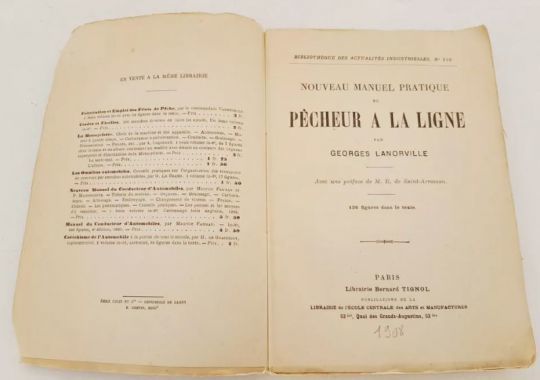
He explains why he wrote this fishing manual in the chapter entitled: The fisherman's practical work. "I hate these beautiful books that teach nothing. If I write a book on fishing, I want the reader to know his subject after reading it, and to have nothing left to acquire but experience, which can't be taught." This chapter is essentially devoted to how to tie rings on a bamboo rod for fishing with a reel. To conclude this chapter, Lanorville writes: "I wanted these beginners, with no other guide than this modest book, to learn how to do all the jobs that a fisherman might have to do". I agree with this author, because if a person buys a book on fishing as a guide, treatise or manual, it must contain something to satisfy our novice.
In his desire to be as close as possible to novice anglers, the author writes other chapters such as: "The different types of angling" and "Fishing for individual fish". At the beginning of each of these chapters, he writes: "Strike fishing is undoubtedly the most widespread of all types of fishing. It's what beginners instinctively do when they start to indulge in this sport so full of charm." This confirms what he says: the basis of fishing is spearfishing, i.e. the simplest form of our hobby, but which has many subtleties if you put a little effort into it. In the next chapter, he returns to his desire to teach fishing to his readers, in much the same way as a teacher teaches French, mathematics, history or other subjects to his pupils. Here, Lanorville improvises himself as a teacher, and we are the novice pupils, anxious to learn as much as possible about the theories of angling that we can't wait to apply later.
In the following chapter, he gives advice on how to fish for each of the species "You shouldn't be surprised or angry if you don't always succeed in following them. Fishing isn't like barracking, where you win every time. Fishing for small fish like bleak, minnow and gudgeon is particularly suited to ladies, beginners and children." This sentence implies that women are... children, and that they don't have what it takes to catch big fish. Let's not forget that this was 1908, and that women didn't have the right to vote (not until April 10, 1944); they were considered children, had to stay at home and take care of household chores, and weren't allowed to open a bank account... It's worth noting, however, that the author is quick to mention the female gender, something that authors of current works rarely do. Some of them are much better, but they rarely make the news. Like most books on the nineteenth and early twentieth centuries, this book is very interesting for what it says. You can see how society is evolving, as well as fishing techniques and the way fishermen think.
Fishing for beginners in recent literature
A few years ago, I came across : Let's go fishing! Manuel de l'apprentice pêcheur en eau douce et en mer 8/12 ans. As its title suggests, this book is aimed at the younger generation who wish to practice our hobby. Written by Michel Luchesi (author of other books on fishing) and lavishly illustrated by Océane Meklemberg. This is the second time I've seen books aimed at children. I had already leafed through Philippe Dours' Petit manuel de pêche à l'usage des enfants (7/12 years) and Michel Roussillat's La pêche en eau douce.
Back to Allons à la pêche! After a tempting summary, here's what it says "Thanks to this book, you'll discover how to catch fish in both fresh and salt water. The different fishing techniques can be divided into several categories." The categories are then listed and briefly discussed, including the simplest ones: jigging, toc fishing, casting and fly fishing. After the usual advice on what to wear, which rod to choose and the different knots to use depending on the type of fishing chosen, the author gives a brief review of angling: "In contact with nature, man marvels. Through fishing, he discovers a mysterious and fascinating world that takes him to another dimension, to the other side of the mirror of water". After a brief historical review, the author discusses best practices and how to behave at the water's edge, bearing in mind that fishing is not without danger. Let's move on to the various "playgrounds", a well-chosen expression to appeal to young people. These include rivers, streams and lakes. Each one is illustrated and commented on, explaining which species are the most common. The identity card for each fish, with its drawing and a few comments, helps youngsters to understand them better.
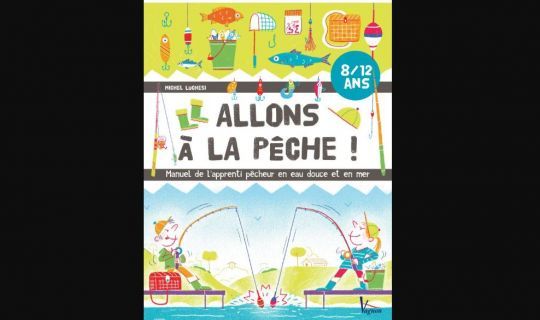
In the various fishing techniques we find a little bit of Lanorville as far as spearfishing is concerned "There's nothing like a spinning rod to catch small fish like bleak, gudgeon or roach." Of course, the equipment we recommend is just as simple as that described above. Other types of fishing are mentioned, such as carp fishing, toc fishing or fly fishing, and even the use of an echo sounder on board or in a boat.
I'll pass over all the techniques we're more or less familiar with to highlight one that we're seeing less and less of in fishing books or magazines these days: street fishing. This practice, which consists of fishing in city centers, canals and other rivers - areas abandoned by other anglers - was once all the rage, particularly in the 2000s. According to the author "A trend that is driving city dwellers, especially young people, to tease fish in urban areas. They fish with lures..." As for their philosophy, "It's in a nutshell: have fun, create a community around the same passion, practice sport fishing while respecting the fish [...] They are no-kill enthusiasts. On the other hand, they never miss an opportunity to photograph their trophies." In fact, the drawing illustrating this double-page spread is a selfie of a young girl holding a fish. We can see that the place given to girls and women in fishing has evolved. After freshwater, it's now seawater, where the same concept can be found.
This little 95-page book is a veritable bath of youth for anyone wanting to learn about fishing, even though it's only for children. I recommend you give it as a gift to your children, or to those who want to start out in search of a peaceful and exciting activity.
